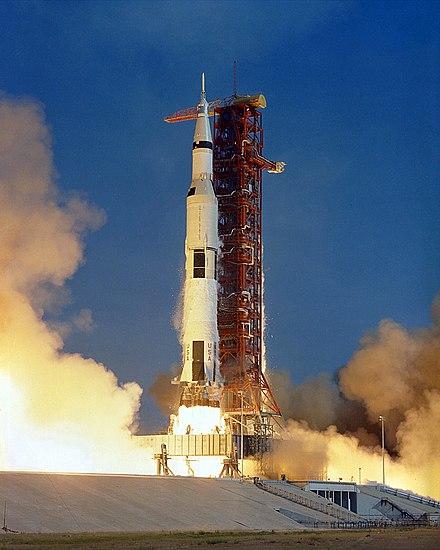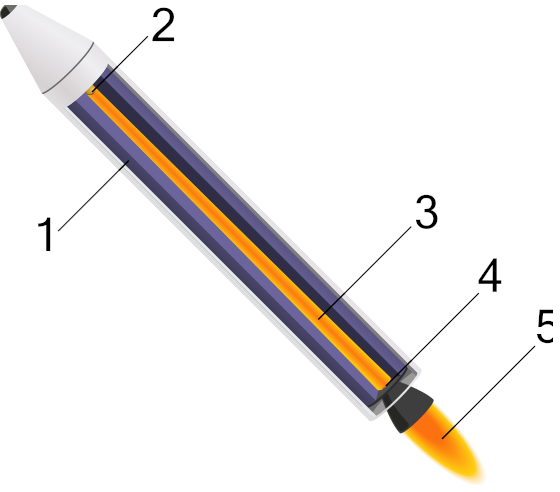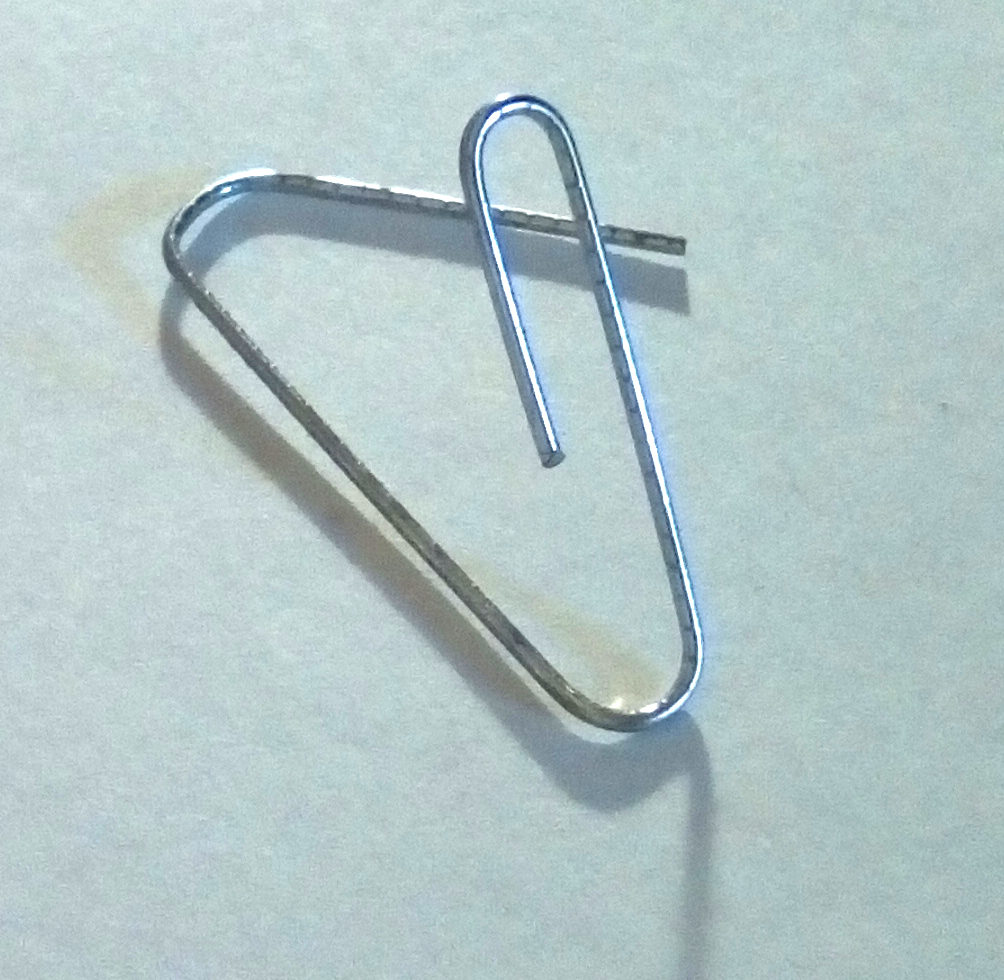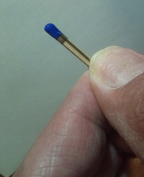Indoor Rocketry for Children

 First, this is for the benefit of children but adult supervision is absolutely necessary! These are real rockets that really fly and like SpaceX or NASA rockets, there is real fire.
First, this is for the benefit of children but adult supervision is absolutely necessary! These are real rockets that really fly and like SpaceX or NASA rockets, there is real fire.
 Before we build a real rocket we need to understand how real rockets work. A rocket has some sort of propellant, a place to put the propellant, like a propellant tank in a liquid-fueled rocket, and a nozzle. These matchstick rockets need only one more thing, but large space rockets need a lot more.
Before we build a real rocket we need to understand how real rockets work. A rocket has some sort of propellant, a place to put the propellant, like a propellant tank in a liquid-fueled rocket, and a nozzle. These matchstick rockets need only one more thing, but large space rockets need a lot more.
 The last thing we need to launch our rocket, once it’s been built, is a launch pad/gantry combination.
The last thing we need to launch our rocket, once it’s been built, is a launch pad/gantry combination.
 Rocket engines work by the physical principle that every action has an equal and opposite reaction. The rocket is pushed forward by expelling its exhaust in the opposite direction at high speed, and can therefore work in the vacuum of space. In fact, rockets work more efficiently in space than in an atmosphere, because the air holds it back; it is a resistance to the push.
Rocket engines work by the physical principle that every action has an equal and opposite reaction. The rocket is pushed forward by expelling its exhaust in the opposite direction at high speed, and can therefore work in the vacuum of space. In fact, rockets work more efficiently in space than in an atmosphere, because the air holds it back; it is a resistance to the push.
 Rockets date back to at least 13th century China. Significant scientific, interplanetary and industrial use did not occur until the 20th century, when rocketry was the enabling technology for the Space Age, including setting foot on the Earth’s moon. Rockets are now used for fireworks, weaponry, ejection seats, launch vehicles for artificial satellites, human spaceflight, and space exploration.
Rockets date back to at least 13th century China. Significant scientific, interplanetary and industrial use did not occur until the 20th century, when rocketry was the enabling technology for the Space Age, including setting foot on the Earth’s moon. Rockets are now used for fireworks, weaponry, ejection seats, launch vehicles for artificial satellites, human spaceflight, and space exploration.
 Chemical rockets are the most common type of high power rocket, typically creating a high speed exhaust by the combustion of fuel with an oxidizer. Our oxidizer is combined with the fuel, and only needs heat to start the reaction.
Chemical rockets are the most common type of high power rocket, typically creating a high speed exhaust by the combustion of fuel with an oxidizer. Our oxidizer is combined with the fuel, and only needs heat to start the reaction.

 Here is a simplified diagram of a solid-fuel rocket.
Here is a simplified diagram of a solid-fuel rocket.
1. A solid fuel-oxidizer mixture (propellant) is packed into the rocket, with a cylindrical hole in the middle.
2. An igniter combusts the surface of the propellant. Our igniter will be simply another match, lit.
3. The cylindrical hole in the propellant acts as a combustion chamber.
4. The hot exhaust is choked at the throat.
5. Exhaust exits the rocket.
 What you will need to build rockets are paper matches for the rocket body and propellant, as well as an igniter, and a small piece of aluminum foil about an inch and a half square for the housing and nozzle. Too big and it won’t fly, too small and it will explode, just like a big NASA rocket. Luckily, tiny rockets have tiny explosions.
What you will need to build rockets are paper matches for the rocket body and propellant, as well as an igniter, and a small piece of aluminum foil about an inch and a half square for the housing and nozzle. Too big and it won’t fly, too small and it will explode, just like a big NASA rocket. Luckily, tiny rockets have tiny explosions.

 A sewing needle or pin is needed to use as a tool to construct the rocket’s combustion chamber and nozzle.
A sewing needle or pin is needed to use as a tool to construct the rocket’s combustion chamber and nozzle.
 And a small paper clip to build a gantry with. We will need a gantry before we build the rocket. To build the gantry, pull the outside out, and the inside up, as in the illustration.
And a small paper clip to build a gantry with. We will need a gantry before we build the rocket. To build the gantry, pull the outside out, and the inside up, as in the illustration.
 Now to build our rocket. It will consist of a paper matchstick and about an inch square piece of foil. You will have to experiment, as different brands of foil have different thicknesses. Unless you have extra heavy duty foil (which may not even work) you will probably have to double the foil to keep it from exploding. Like I said before, the explosion is tiny.
Now to build our rocket. It will consist of a paper matchstick and about an inch square piece of foil. You will have to experiment, as different brands of foil have different thicknesses. Unless you have extra heavy duty foil (which may not even work) you will probably have to double the foil to keep it from exploding. Like I said before, the explosion is tiny.

 First, cut or tear the foil to the right shape and size. Take a matchstick and lay the needle on it as in the illustration. The needle’s point should be resting on the match head, which is of course our propellant.
First, cut or tear the foil to the right shape and size. Take a matchstick and lay the needle on it as in the illustration. The needle’s point should be resting on the match head, which is of course our propellant.
 Now tightly wrap the foil around the head end of the match and pin. If it isn’t tight, the housing will fly off, just like a big NASA rocket.
Now tightly wrap the foil around the head end of the match and pin. If it isn’t tight, the housing will fly off, just like a big NASA rocket.
 Then gently slide the needle out, leaving your combustion chamber/nozzle for the hot gas to shoot out and propel your rocket across the room. Place it on your gantry, with the nozzle that you made with the pin on the bottom.
Then gently slide the needle out, leaving your combustion chamber/nozzle for the hot gas to shoot out and propel your rocket across the room. Place it on your gantry, with the nozzle that you made with the pin on the bottom.

 Now, to launch your rocket, light a match and heat the top of the rocket, the aluminum with the match head underneath. It may take a few failures and destroyed rockets before your rockets fly, just like NASA and the Russians. You’ll probably learn a few things along the way, and your children certainly will, both from the failures and successes.
Now, to launch your rocket, light a match and heat the top of the rocket, the aluminum with the match head underneath. It may take a few failures and destroyed rockets before your rockets fly, just like NASA and the Russians. You’ll probably learn a few things along the way, and your children certainly will, both from the failures and successes.
 Just like with Space-X, Boeing, or NASA, your failures may be spectacular, like when you have a miniature explosion. I’ve made a lot of these tiny rockets, and have never seen them cause any sort of damage, although if one hit you in the eye you would probably need medical attention. And of course make sure the children can’t get the matches!
Just like with Space-X, Boeing, or NASA, your failures may be spectacular, like when you have a miniature explosion. I’ve made a lot of these tiny rockets, and have never seen them cause any sort of damage, although if one hit you in the eye you would probably need medical attention. And of course make sure the children can’t get the matches!
 The Passover
The Passover
The Trump Supporter
A Wolf in Shepherd’s Clothing
Driving the Snakes from Ireland
The Coffee Pot
The Best Music Ever Recorded
Sears
Why Are There No DINOs?
Socialism and Capitalism
Channel 49
Abe
Blockbuster
Trump and the Christians
Q and the Real “Deep State”
Last year’s stories and articles
Share on Facebook
You can read or download my books for free here. No ads, no login, just free books.




